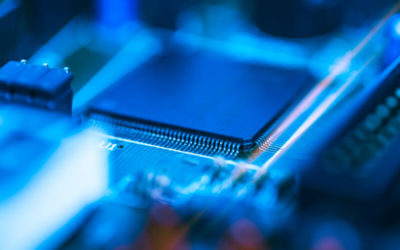Why Let Device Constraints Constrain Your Business Potential?
19
October 2020
by Eliav Gnessin
Solving with Firmware Innovation
Embedded computing devices deployed within the Internet of Things (IoT) have, for years, been challenged with the ability to compute given minimal resources.
Constraints include memory and processing capabilities and the low-power radio standards utilized as network interfaces.
Product companies and Solution providers need inexpensive computing devices at scale – not just a few dozen, but tens of thousands and even hundreds of thousands that are small, affordable, and reliable, especially for distributed implementations (for example, an entire smart city using controlled LED lighting).
The ability to network embedded devices opens up endless opportunities to develop new applications in homes, buildings, and public spaces. The value of the IoT is found in new computing services that integrate existing software services already available via the Internet with the control and data gathering capabilities of embedded devices.
Technology improvements following Moore’s law (the value of the network is based on the number of endpoints on the network) are making embedded devices more economical, smaller and more energy-efficient but not necessarily more powerful. Mass adoption equals mass production, which has contributed greatly to the growth of the IoT and Industrial IoT.
The challenge today, however, are expectations for edge devices to do a lot more work than they have previously done, and that takes more CPU power, memory, and storage capacity.
The rapid advancement and roll out of 5G wireless IoT services are exacerbating the challenge while also opening up new innovation opportunities – the networks will be amazing, but what about the edge? How do we create devices that are both powerful and resource-efficient, rugged, and affordable?
Embedded devices used in the IoT need to possess computational capabilities for the task they must perform, security, and networking abilities allowing integration with the Internet. To minimize product costs, IoT devices are to be equipped with low-power, constrained resources, combined with a production-grade, low-footprint IoT client that allows utilizing the full capabilities of the chipset.
Similar Blogs
Create a Competitive Edge with DeviceTone’s Compact, Intelligent, and Affordable IoT Gateway
Ready to roll out Connected Field Services (CFS) offerings? We are making it simple to do so, with our full suite of IoT hardware, firmware, and software, which makes our entire DeviceTone IoT Suite “Plug and Play.”
Plug and Play on the Azure IoT Marketplace: Partnering with Microsoft To Simplify Connected Field Service
The highlight of our launch of DeviceTone® Genie this week was the webinar we co-hosted with Microsoft, featuring Diego Tamburini, Principal Industry Lead – Cloud for Manufacturing, and our CTO Eliav Gnessin.
CEO Interview: Cloud of Things Grants Wishes with Genie
Earlier this month, Cloud of Things, an IoT company based in Tel Aviv and Boston, announced a new CEO had taken the reigns, days before the company announced with Microsoft and Nordic Semiconductor that its software platform and plug and play edge device (called Genie) was added to the Azure marketplace.



